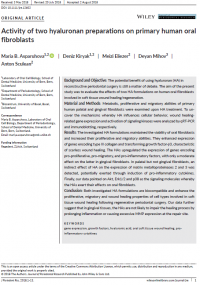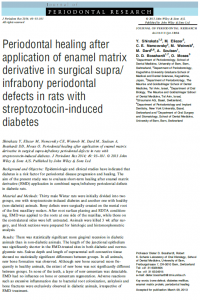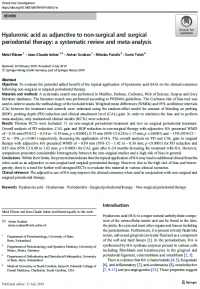Reconstructive Approach in Residual Periodontal Pockets with Biofunctionalized Heterografts a Retrospective Comparison of 12-Months Data from Three Centers
Abstract: Regenerative capacity of well-preserved blood clot may be enhanced by biologics like enamel matrix derivative (EMD). This retrospective analysis compares outcomes reported by three centers using different heterografts. Center 1 (C1) treated intrabony defects combining cross-linked heavy weight hyaluronic acid (xHyA) with a xenograft, Center 2 (C2) used EMD with an allograft combination to graft residual pocket. Center 3 (C3) combined xHyA with placement of resorbable polymer membrane for defect cover. Clinical parameters, BoP reduction and radiographically observed defect fill at 12-months examination are reported. The 12-months evaluation yielded significant improvement in PPD and CAL at each center (p<0.001, respectively). Analyses of Covariance revealed significant improvement of all parameters, significantly greater CAL gain disclosed C2 vs. C1 (p=0.006). Radiographic defect fill presented with significantly higher scores for C2 and C3 vs. C1 (P=.003 and =.014; C2 vs. C3 P=1.00). Gingival recession increased in C1 and C3 (P=1.00), while C2 reported no GR after 12-months (C2:C1 P=.002; C2:C3 P=.005). BoP tendency and pocket closure rate shared similar rates. Within limitations of the study, data comparison indicated that xHyA showed similar capacity to enhance regenerative response, as known for EMD. Radiographic follow-up underlined xHyA staying alone role in new attachment formation. periodontology




